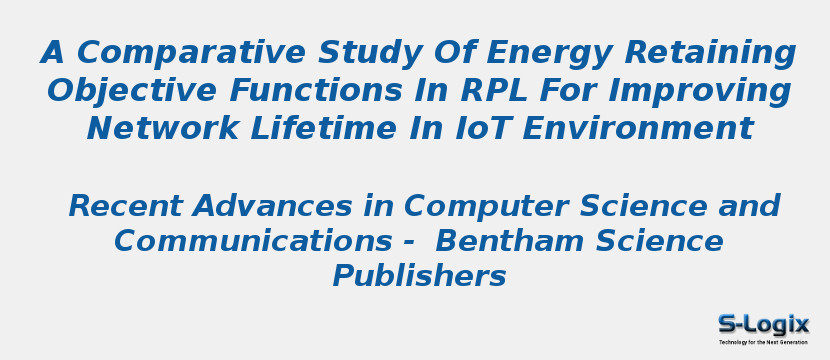Research Area: Internet of Things
Internet of Things will be inevitable in all walks of our life, where it becomes necessary for all smart devices to have end-to-end data transfer capability. These low power and low-cost end devices need to be enabled with IPv6 address and corresponding routing mechanism for participating in Internet of Things environment. To enable fast and efficient routing in Internet of Things network and constrained with limited energy, Routing Protocol for Low-power Lossy Network (RPL) has been developed by ROLL-Work Group. As RPL is proactive and energyconserving, it has become the most promising routing protocol for Internet of Things. Nodes in Low-power Lossy Network (LLN) are designed to conserve energy by maintaining radio silence over 90% of its lifetime. It is possible to further improve the node’s lifetime and thereby considerably extending network’s longevity by performing sensible routing. Different routing structure in Internet of Things network can be attained by carefully crafting the objective function for the same set of nodes which satisfies different goals. This paper focuses on different objective functions in RPL which have been developed over time with the emphasis on energy conservation and maximizing the lifetime of the network. In this work, we have carefully studied different metric compositions used for creating an objective function. The study revealed that combining metrics provides better results in terms of energy conservation when compared to single metric defined as part of RPL standard. It was also noted that considering some metric as a constraint can increase the rate of route convergence without affecting the performance of the network.
Keywords:
Author(s) Name: Cyriac, Robin; Karuppiah, Marimuthu
Journal name: Recent Advances in Computer Science and Communications
Conferrence name:
Publisher name: Bentham Science Publishers
DOI: 10.2174/2213275912666190807121149
Volume Information: Volume 13, Number 2, 2020, pp. 159-167(9)
